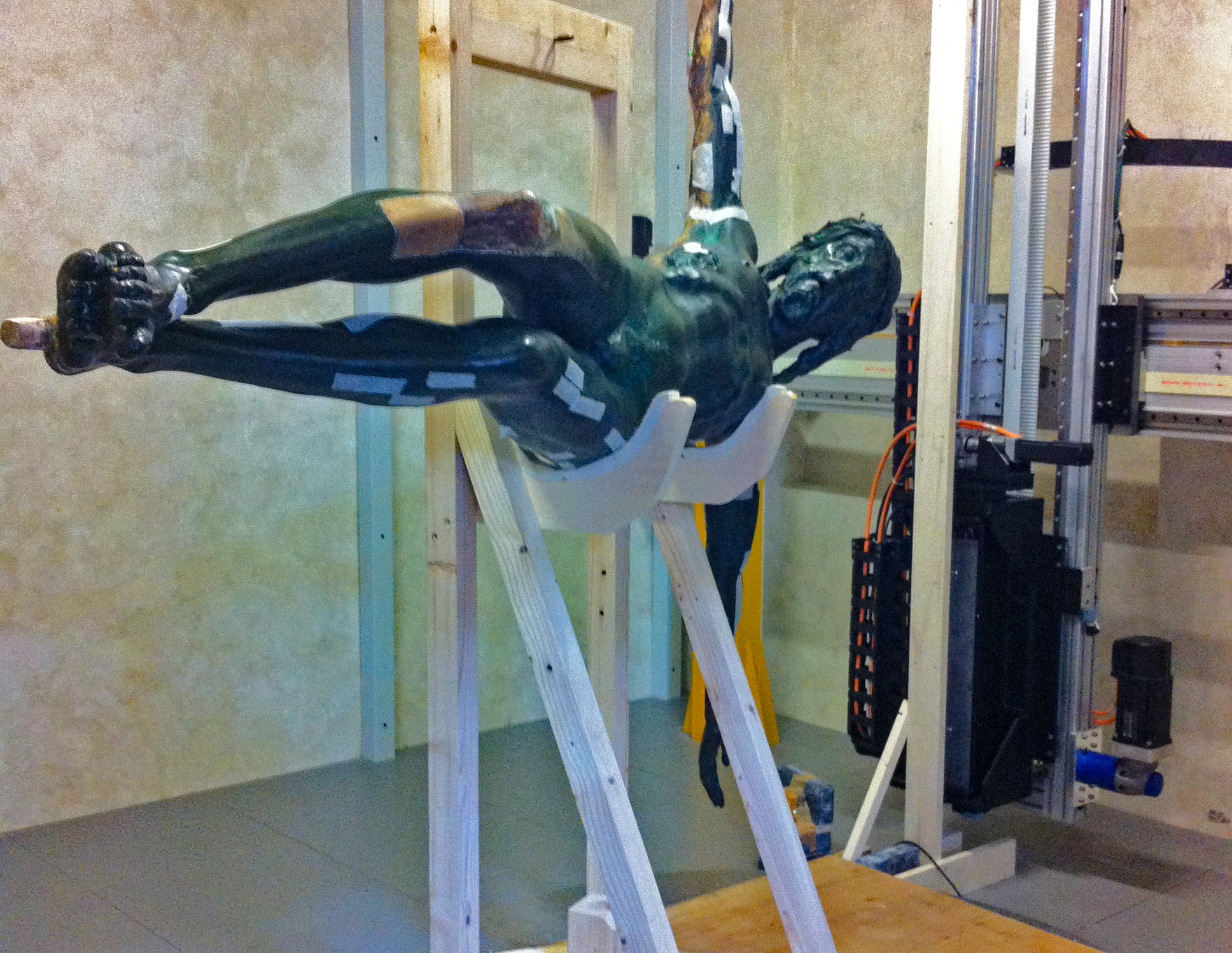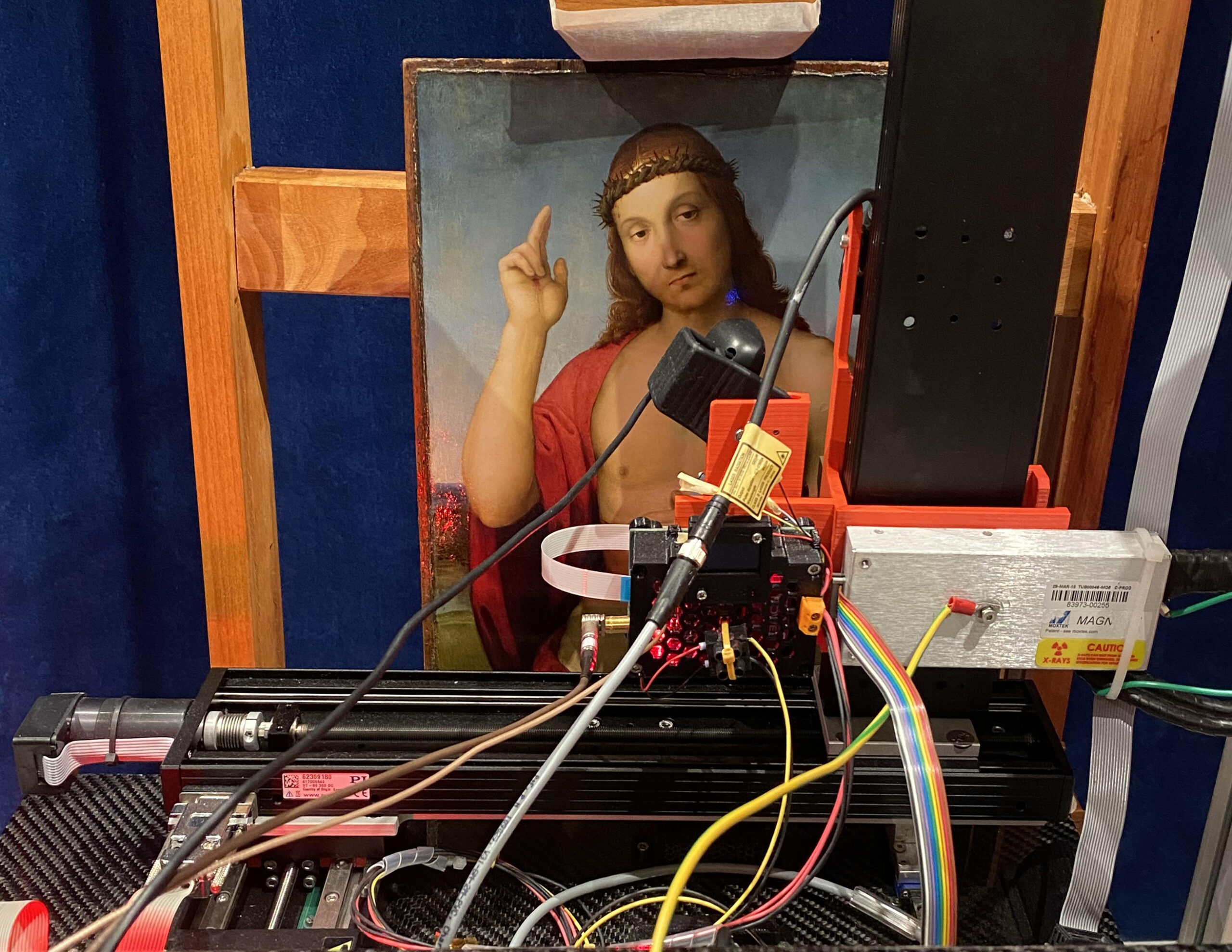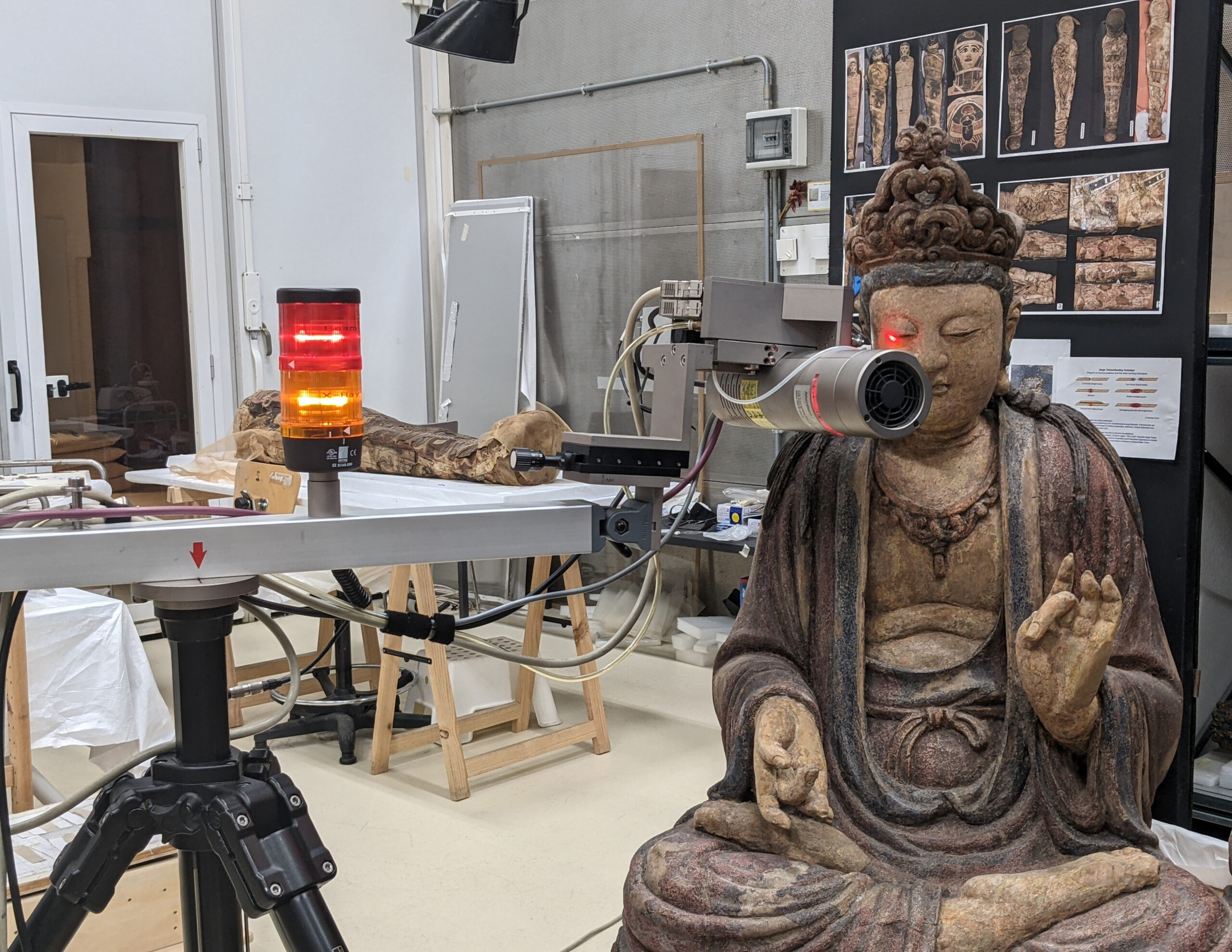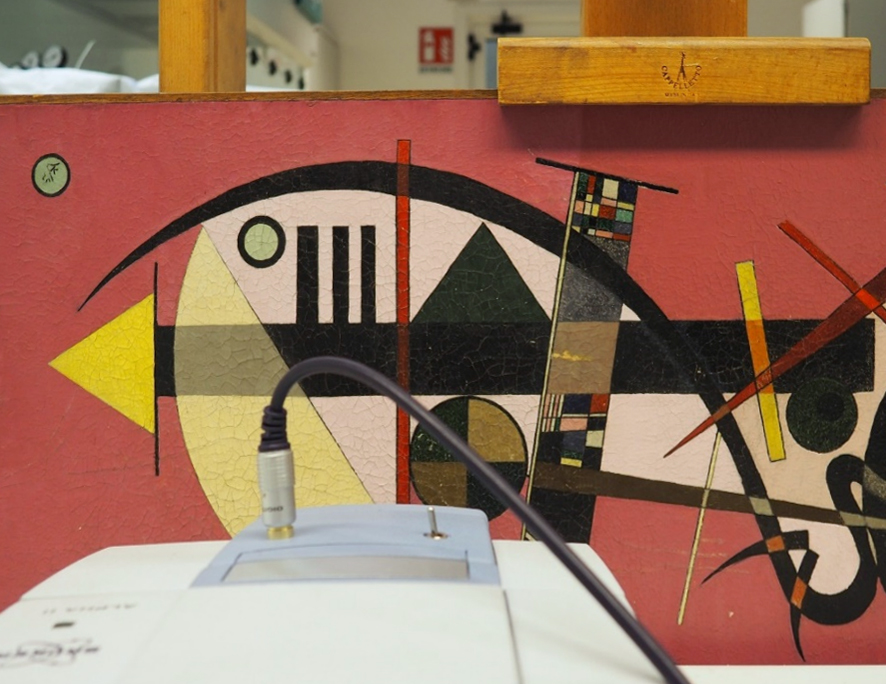Following established guidelines and methodological principles in the field of conservation, treatments are complemented by scientific analysis on the objects, also in support of university and advanced training programming.
Prior to conservation interventions, non-invasive imaging techniques provide preliminary information on the works’ materials and state of preservation. Subsequently, in-depth investigations with non-invasive point-based techniques and micro-invasive analysis on microscopic samples removed from the artifacts integrate the available data and guide treatment choices.
Systematic testing on conservation products and methodologies supports treatment on complex cases and studies conducted as part of Master’s Degree dissertations.
Competences and instruments of the Scientific Laboratories are made available for through third-party analytical services. The types of analyses and techniques are listed here: Facilities and Equipment
CASE STUDY

Polychrome wooden ceiling, House of the Telephus Relief
Archaeological Park of Herculaneum
This project involved the scientific investigation of 17 elements from a polychrome wooden ceiling, discovered on the ancient beach of Herculaneum in 2009 and subsequently subjected to consolidation and cleaning treatments. These elements belong to the magnificent House of the Telephus Relief. Non-invasive analysis uncovered valuable insights into the color palette and techniques used in the Roman-era painted decoration. The Scientific Laboratories coordinated a multi-institutional team, formed within the Cultural Heritage Network (CHNet) of the INFN, consisting of experts from the CCR, Politecnico di Torino, and INFN Florence.
CASE STUDY

Donatello, wooden crucifix
Church of Santa Maria dei Servi, Padua
As part of a study aimed at revealing the work’s conservation history and assembly techniques, computed tomography provided new information on both the carved wooden part and the modeled, polychrome sections, revealing precious details about the wood joints, thickness, preservation state, and areas where the artist applied stucco over the carved wood. The results of the project were presented in a section of the Uomo Virtuale. Corpo, Mente, Cyborg exhibit (Mastio della Cittadella, Turin, May 4 - October 13, 2019) and are available on the dedicated website of the Ministry of Culture (http://www.donatello.beniculturali.it/).
CASE STUDY

Raphael, Angel (1501) and Christ Blessing (1505-1506)
Pinacoteca Tosio Martinengo, Brescia
At the request of the National Committee for the 500th anniversary of Raphael’s death, two panel paintings were analyzed, one of which had been transferred onto canvas. Non-invasive, spot- based and imaging investigations revealed new insights into the preservation state, color palette, and artist’s techniques, including underlying drawings made with different materials and the earliest use of Egyptian blue in Renaissance art. The Scientific Laboratories coordinated a team that also comprised the University of Milan’s Department of Physics, the “Nello Carrara” Institute of Applied Physics at CNR, and INFN Florence.
CASE STUDY

Polychrome wooden sculptures depicting Buddha
Asian Art Museum (MAO), Turin
Science played a key role in a project dedicated to the study and conservation of a body of devotional sculptures, attributed to the Ming-Qing Chinese dynasties (16th-18th centuries) based on iconographic considerations, which were brought to Europe over the centuries as trade commodities and pieces for the Western art market. Scientific analysis supported the complex conservation treatment and helped identify any layers of repainting applied over time, addressing questions of authenticity. The findings were an integral part of the Buddha10 – A Fragmented Display on Visual Art Evolution exhibition (MAO, October 20, 2022 - September 3, 2023).
CASE STUDY

Kandinsky, Spitz-Rund (1925)
As part of a comprehensive project divided into two sequential phases of study and conservation, scientific analysis highlighted numerous similarities between the painting under examination and other works by the artist, thereby providing a deeper understanding of his artistic practice during the Bauhaus period (1922-1933). The use of non-invasive analytical techniques, such as FTIR reflectance spectroscopy, proved essential for monitoring the thinning of a synthetic ketonic resin that had been applied during a previous conservation intervention. The cleaning treatment was carried out after a preliminary phase of systematic testing on mock-up samples.



















